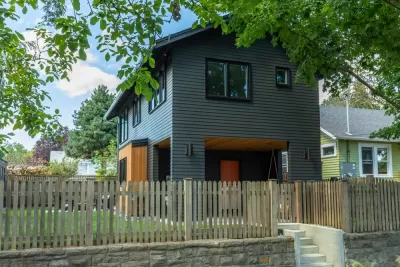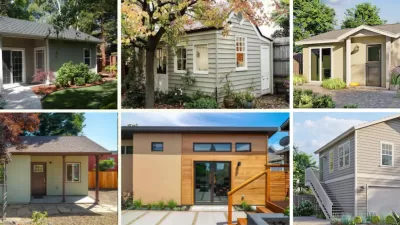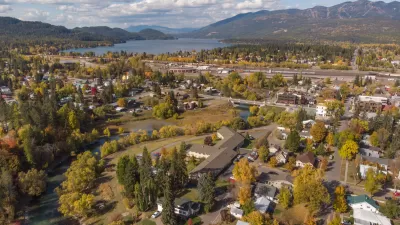With the right policies in place, basement apartments, converted garages, and backyard cottages can create a significant number of affordable housing units.

In an op-ed in Governing, Emily Hamilton outlines the results of her research into how accessory dwelling units (ADUs) can play a role in easing the housing crisis and the policies cities and states can leverage to encourage ADU construction.
“At one end of the spectrum, California policymakers have gone the farthest to protect homeowners’ right to build ADUs. On the other, New Hampshire policymakers legalized ADUs but left open the opportunity for local zoning ordinances to put many limits on them,” Hamilton explains. Even in California, owner occupancy requirements limited ADU construction until 2017, when a series of state laws limited the power of cities to regulate ADUs and led to an “impressive surge” in ADU permits.
Regulations and policies aren’t the only things that have an impact on ADU production, however. “Two other key determinants of ADU construction — and of its potential to lower prices in a given city or neighborhood — are how easy it is to adapt the existing housing stock to include them and the willingness of local homeowners to take the leap to build them.” Hamilton adds that in New Hampshire, where localities have a lot of leeway in restricting ADUs, some cities are seeing a high rate of permitting in part due to the state’s older population and the adaptability of existing housing stock.
Hamilton concludes that, with the right policies in place, ADUs “may be the least contentious way to create opportunities for more housing within existing residential neighborhoods.”
FULL STORY: The Role of ADUs in Easing America's Housing Crisis

Alabama: Trump Terminates Settlements for Black Communities Harmed By Raw Sewage
Trump deemed the landmark civil rights agreement “illegal DEI and environmental justice policy.”

Planetizen Federal Action Tracker
A weekly monitor of how Trump’s orders and actions are impacting planners and planning in America.

The 120 Year Old Tiny Home Villages That Sheltered San Francisco’s Earthquake Refugees
More than a century ago, San Francisco mobilized to house thousands of residents displaced by the 1906 earthquake. Could their strategy offer a model for the present?

San Francisco Opens Park on Former Great Highway
The Sunset Dunes park’s grand opening attracted both fans and detractors.

Oregon Legislature to Consider Transit Funding Laws
One proposal would increase the state’s payroll tax by .08% to fund transit agencies and expand service.

Housing Vouchers as a Key Piece of Houston’s Housing Strategy
The Houston Housing Authority supports 19,000 households through the housing voucher program.
Urban Design for Planners 1: Software Tools
This six-course series explores essential urban design concepts using open source software and equips planners with the tools they need to participate fully in the urban design process.
Planning for Universal Design
Learn the tools for implementing Universal Design in planning regulations.
Clanton & Associates, Inc.
Jessamine County Fiscal Court
Institute for Housing and Urban Development Studies (IHS)
City of Grandview
Harvard GSD Executive Education
Toledo-Lucas County Plan Commissions
Salt Lake City
NYU Wagner Graduate School of Public Service





























